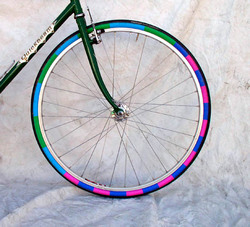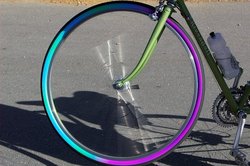A while back I argued that the temporal aspects of design often get ignored by designers. Most designers, I’d wager, don’t think about how their design will look in a year, let along five or ten. Similarly, many don’t think about what their design will look like during use — what will it be like in motion?
There are exceptions. Good software designers obsess over this question. After all, the quality of a user interface is dictated in no small part by the way in which it helps a user move through a single task, and then from one task to another. Spend any amount of time designing a software interface, such as a website, and you’ll become very sensitized to how your solution works when it is in motion.
In my opinion, not many designers of physical products think about their product in motion, but they should. Most products get designed on a piece of paper or on a screen, so it becomes easy and normal to think of them as Platonic forms existing on a still life of white or black. But when designers do take into account motion, cool things can happen. For example, some cars that seem ugly sitting in the driveway become objects of beauty when seen carving their way up a curvy, mountain road. A knife can have a more or less appealing form, but its true beauty comes with use.
So what would happen if we thought of all designs in terms of movement? Grant Petersen of Rivendell Bicycle Works (the most vibrant, real brand on the planet, in my opinion) took that idea and came up with a patented innovation, the SpeedBlend bike tire:
The colors on the SpeedBlend tire sidewall are interesting when seen standing still, but come alive when spun — which takes Petersen’s design from just another eccentric bike tire to something more about magic and fun:



Zissou Adidas
Adidas Smatro Sports Shoes product ADIDAS boys Smatro sports shoes ADIDAS . It pretty much invo